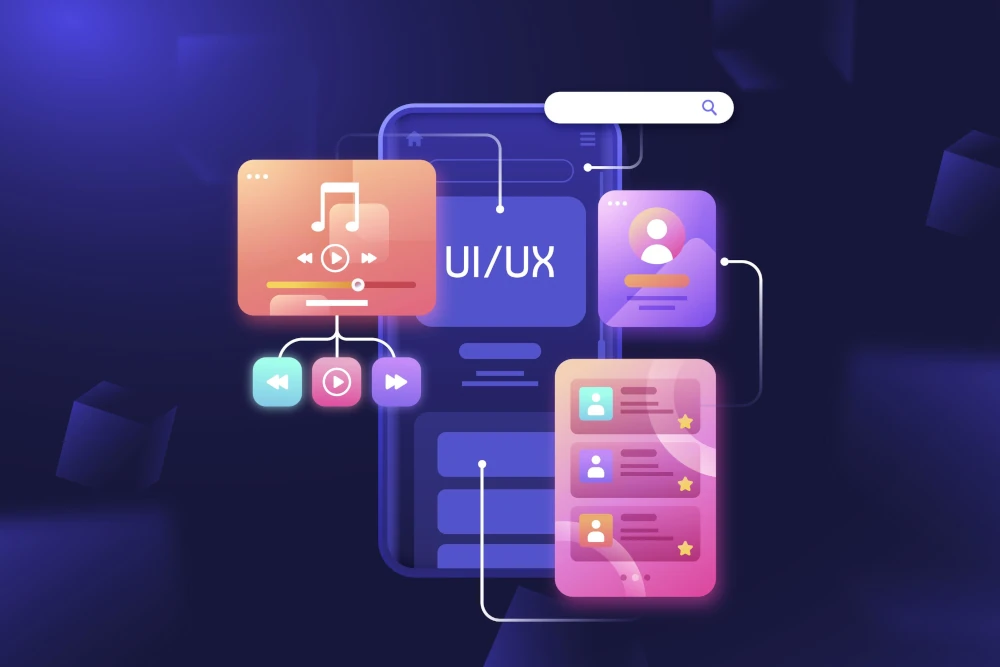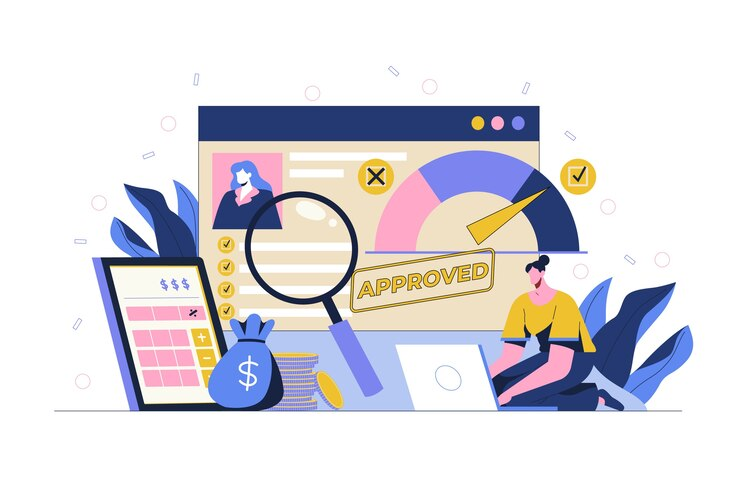Developing a wealth management app allows users to manage their finances and investments conveniently from their mobile devices. With the rise of mobile technology, these apps have become increasingly popular among both investment firms looking to reach more clients and tech startups, spotting a gap in the market. Approximately 76% of Americans utilize mobile banking services.
In this guide, we’ll walk through the key things you need to know to create a successful wealth management app.

Understanding Your Target Audience

The first step is to define who you want to target with your app clearly. This will inform all subsequent decisions in the development process.
Some options to consider:
- general consumers looking to manage their investments;
- high net worth individuals requiring more advanced functionality;
- financial advisors need a better way to manage client portfolios;
- retail investing & trading platforms.
Conduct user research to create detailed buyer personas. Map out their demographics, behaviors, goals and frustrations. Wealth management software development services usually start with this step because it allows you to craft tailored solutions to their needs when building your app.
Defining the Core Functionality
Once you have selected your target users, the next step is to define exactly what functionality your app needs to deliver.
Some core features to consider including:
- Account overviews. Dashboard displaying total account value, asset allocation breakdowns, and gains/losses.
- Net worth tracking. Enable users to link bank accounts/credit cards to track net worth over time.
- Budgeting. If targeting consumers, allow them to manage income, expenses and savings goals.
- Transfer funds. Functionality to transfer money between accounts or funding sources.
- Trading. If investing capabilities are provided, a real-time trading interface and tools are needed.
- Reporting. Users will want to generate account statements and performance reports.
Prioritize must-have features first that directly address your user’s primary needs. Additional functionality can always be added later.
Planning the Technical Architecture
With features defined, translating specifications into a technical architecture is next. Key considerations around building a robust, enterprise-grade platform:
- Mobile platform. Will you build native iOS and Android apps, cross-platform apps, or mobile websites? Factor in wealth management software development costs, user experience and security.
- Front-end. iOS apps are written in Swift or Objective-C. Android apps use Java or Kotlin. React Native can be used for cross-platform.
- Back-end. Node.js, Ruby on Rails, ASP.NET and Python are popular server-side languages.
- Data layer. Database for persisting user data and transactions. The top options are PostgreSQL, MySQL or NoSQL databases like MongoDB.
- Integration layer. Integrations will be required to sync external bank/brokerage data. Use solutions like Plaid, Yodlee or Yapily.
- Security. Enterprise-grade SSL, role-based permissions, OAuth integrations and data encryption need to be built in.
- Analytics. Platforms like Mixpanel, Amplitude or Looker to analyze app usage data.
- Hosting. For enterprise apps, private cloud solutions like AWS or Azure provide security and scalability.
Bring in a technical co-founder or development team early to guide decisions.
Designing an Intuitive User Experience
The UX design is crucial – if difficult to use, even the best functionality will go wasted.

Some best practices for financial UX design:
- Simplicity. Consumers especially appreciate simple, easy-to-use interfaces. Avoid feature clutter.
- Clear navigation. Use bottom tabs that display key modules to enable quick switching between sections.
- Personalization. Tailor dashboard views and reporting based on user segments.
- Responsiveness. Quick loading times and streamlined flows keep engagement high.
- Consistency. Maintain unified design patterns and standards across UI screens.
- Charts. Enable dynamic charting of portfolio performance over custom time ranges.
Again, map designs directly to address core user tasks during the wireframing phase. Usability test prototypes with real users early and often.
Prioritizing Security
Security is non-negotiable for financial apps dealing with sensitive user data. Some measures to put in place:
- SSL encryption. All data transmission must be over secure HTTPS channels.
- Access controls. Set granular permissions and robust authentication via biometrics, 2FA, etc.
- Vault storage. Store personally identifiable information separately from transaction data.
- Server hardening. Harden back-end systems against intrusion with firewalls, VPNs, vulnerability testing, DDoS mitigation, and keeping systems patched and updated.
- BCDR planning. Document business continuity and disaster recovery plans for worst-case scenarios.
- Compliance. Financial compliance may apply depending on your jurisdiction and the products offered. Know which regulations apply and maintain rigorous auditing and reporting procedures.
Seeking security audits from firms can identify risks before launch. Ongoing penetration testing is also advised.
Enabling Seamless Account Funding
Your app must make it simple for users to fund their accounts and move money in and out efficiently.
- ACH transfers. Support linking external bank accounts via ACH transfers. Minimize confirmation steps for easy recurring deposits.
- Debit/credit cards. Accept all major payment cards and wallets like Apple/Google Pay.
- Wire transfers. Allow domestic and international wire transfers, with clear instructions on required info.
- Checks. For certain user segments, enable mailing of checks to fund accounts.
- Custodial accounts. Streamline setup of custodial accounts for minor children.
- Transfer limits. Configure maximum daily/monthly transfer amounts to meet risk rules.
- Identity verification. Collect necessary user documentation upfront during onboarding to enable transfers.
Fast access to funds with a few clicks is a compelling selling point for your platform.
Launching an Investor Portal
For wealth management use cases, it’s common to launch a companion investor portal – an online dashboard enabling users to complement their mobile app experience.
This can provide at-a-glance views of key modules:
- Positions. Display current investment holdings across accounts.
- Performance. Charts to visualize portfolio returns over time.
- Asset allocation. Breakdown of investments by class: equities, fixed income, alternatives, cash.
- Transactions. Activity showing deposits, withdrawals, trades, dividends and interest.
- Tax Center. Consolidate tax documents like 1099s and track tax lots.
- Statements. On-demand account statements.
- Goals. If relevant, tools for retirement, education or other savings goals.
- Research. Access research reports, market commentary, and educational investing content.
The portal experience can facilitate more complex functionality that is less practical in an app environment.
Driving User Engagement
Gaining user traction is vital – no matter how polished your app, it will flounder without an engaged audience. Some proven tactics:
- User onboarding. Make first-time signup seamless, walking users through key flows.
- Gamification. Reward activity milestones with points/badges to drive usage.
- Push notifications. Send timely alerts on market events and account changes.
- Referral programs. Incentivize referrals with cash/stock bonuses for new user signups.
- Retargeting ads. Remarket to users who abandon signup flows to complete the process.
- Reviews/social proof. Prominently display App/Play Store ratings and testimonials.
- Content marketing. Publish investing education articles on the blog/newsletter to attract potential users.
- Paid acquisition. For the highest intent users, paid search/social ads may provide positive ROI.
- CRM. Leverage customer relationship management data to inform user engagement initiatives.
- Lifecycle campaigns. Tailor messaging across the user journey from signup to retention.
Continuously wealth management software testing according to key metrics will lead you to better results!
Choosing a Monetization Model
Finally, you need to make money long-term off your app to ensure sustainability.
Popular models for wealth apps include:
- Transaction fees. Charge for trades, wire transfers or other transactions conducted.
- Management fees. Annual % fee charged on assets under management (common for advisor platforms).
- Subscription plans. Offer premium features or support for a monthly/annual subscription fee.
- Interchange fees. Generate revenue from any payment processing and debit/credit card transaction interchange.
- Account minimums. Primarily for enterprise clients, a minimum account balance size is required.
- Advertising. If targeting consumers, display ads offer an additional income stream.
- Referral fees. Get paid for referring clients to third-party financial products.
Diversifying income streams is best, combining lower-friction pricing with premium add-ons for the highest customer lifetime value.
Conclusion
Developing software for wealth management is a potential endeavor. Individuals now need efficient tools to manage their money since they are more worried about it than before. Furthermore, the market is still not oversaturated. Thus, providing tools for investing, budgeting, and financial planning might draw in thousands of individuals. However, many factors must be considered to create an application that is really practical, user-friendly, and of excellent quality.


